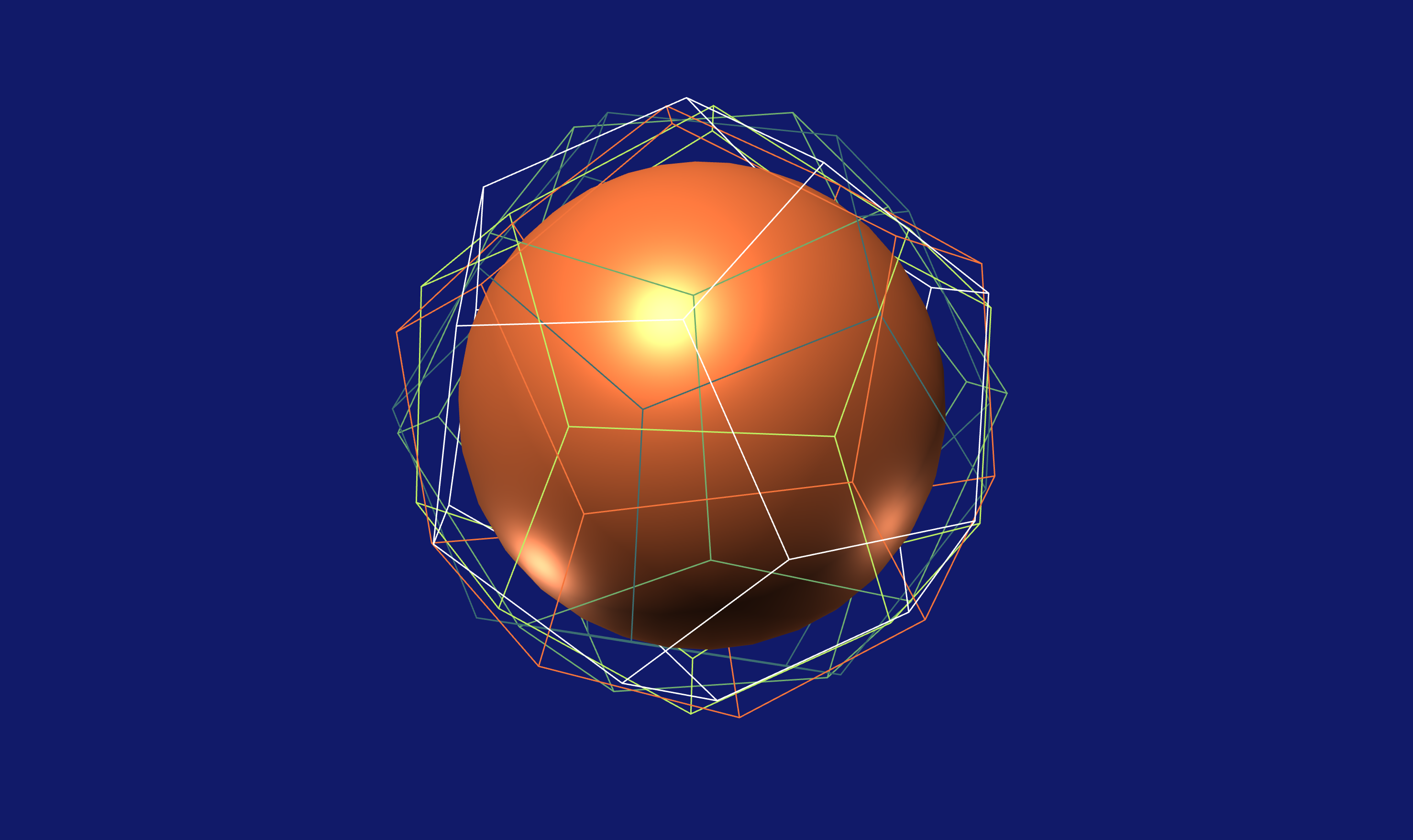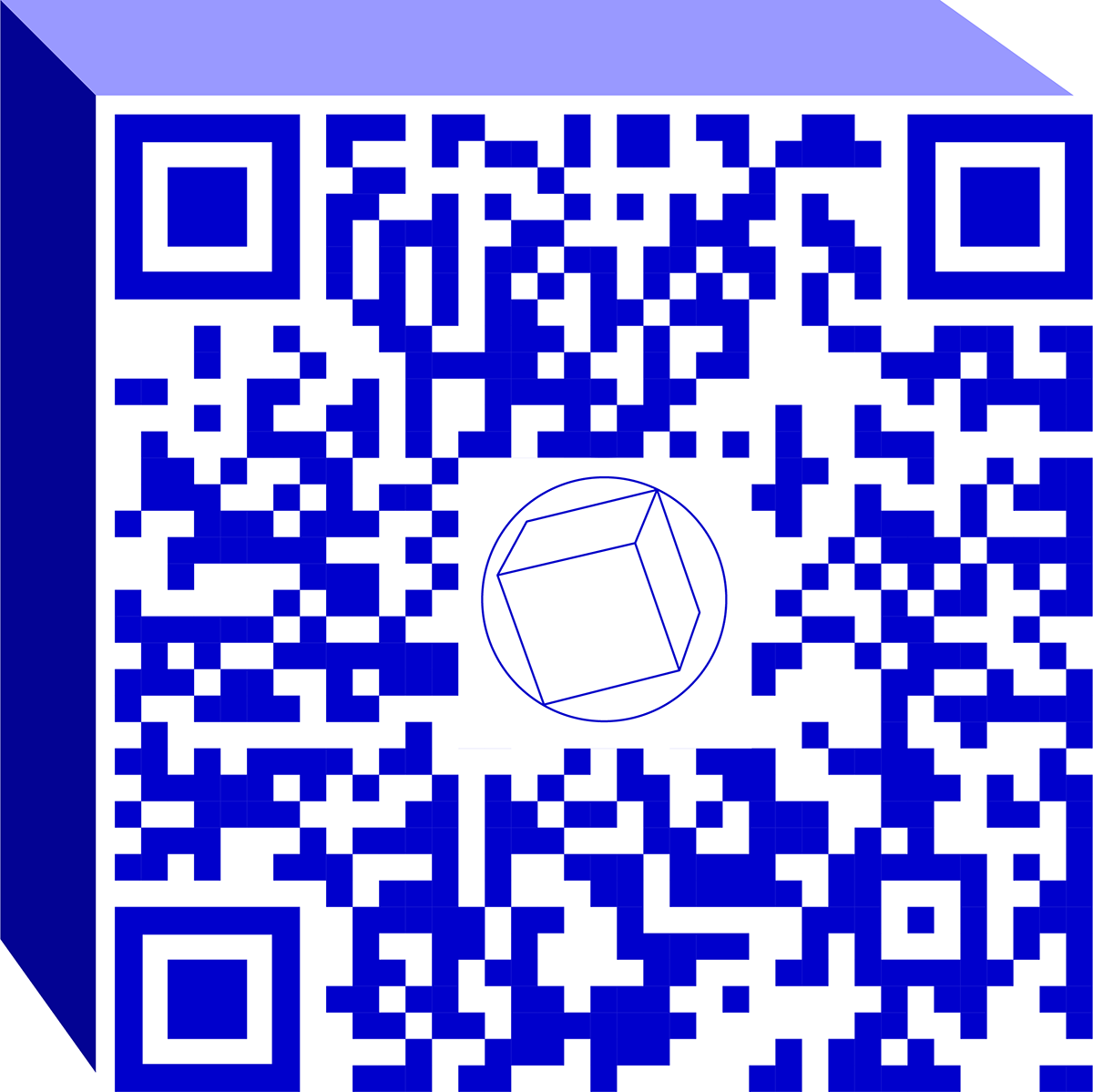Inside Of
points of contact
A thing that contains and is contained, 'Inside of' is an ever revealing transition between these states. It starts with the simple sphere, a celestial entity, containing the abstract and axiomatic platonic solids – simple geometric forms with metaphysical and practical purpose.

2025, augmented reality artwork for Inscription Journal, issue 5 'Containers'.
Work documentation here
Something contained and inside holds meaning and function, the container exists to retain and protect. The five platonic solids simultaneously can be contained in a sphere and contain a sphere with touching and coincident points. The relationship between the sphere and these solids is self-evident through cerebral and visual consideration, and reflecting on this instills a sense of amazement that these truths are so. Since the conception and description of these primitive abstract shapes by the Egyptians and the early Pythagoreans they have held special significance and associations, alongside their practical application in design and art.
Responding to and triggered by the photograph of a shipping container in Kimsooja’s artwork 'Bottari 1999–2019' on the cover of Inscription Volume 5, Daniel Jackson’s augmented reality (AR) artwork 'Inside of' unfolds as a kaleidoscopic meditation on the interplay between inside and outside.


Notes, thoughts, on the sphere and the cube, being contained, Kimsooja’s container image and the platonic solids
The cube and the sphere
Primitive forms, the most basic of which are the sphere and the cube, whilst being very different in appearance, are similar and related in a few ways:
- They are abstractions and axiomatic, they cannot actually exist in their true described form. For example, the edges of a real world cube could never be truely straight, mutually perpendicular or parallel to each other.
- They are the two most basic forms, so they are adjacent to each other in many lists or catalogues of primitive forms.
- They both have simple definitions. The cube is a regular hexahedron (6 faces). It has 6 congruent faces. With the sphere every point on its surface is the same distance from a fixed central point.
Sphere inside a cube (circumscribed cube) and the cube inside a sphere (inscribed cube)
A circumscribed cube – a cube inside a sphere, all the corners (vertices) touch the surface of the sphere.
An inscribed sphere – a sphere inside a cube touches all 6 faces but doesn’t penetrate the surface of the cube.
The diagonal of the inscribed sphere is the same length as the edge of the cube.
The diagonal of the inscribed cube = the diameter for the sphere.
A primitive form cannot be reduced to simpler forms and is defined by pure geometric rules.
IS THERE NOT SOMETHING SO BEAUTIFUL, SIMPLE AND AWESOME IN THESE CONNECTIONS AND RELATIONSHIPS BETWEEN THESE 2 FORMS? THAT THE DIAGONAL OF THE INSCRIBED SPHERE IS THE SAME LENGTH AS AN EDGE OF THE CUBE AND THAT THE DIAGONAL OF THE CIRCUMSCRIBED CUBE IS THE SAME AS THE DIAMETER OF THE SPHERE. MAD BUT SELF EVIDENT, AND THAT MAKES IT EVEN MORE SUBLIME.
The Platonic Solids
The platonic solids are something sublime, as a construct of our imagination, extraordinary that they exist at all, incredible in what they represent metaphysically and such a fundamental design tool and means of description.
There are five three-dimensional regular polyhedra and these are the five platonic solids:
- the tetrahedron
- the cube (regular hexahedron)
- the octahedron
- the dodecahedron
- the icosahedron
These five are all convex, i.e. no dents or inward facing angles. There are other more complex star and compound regular polyhedra.
The regular polyhedra have many self-evident qualities and symmetries which goes some way to explain their mythical status.
Plato believed that our universe was composed of five elements: earth, air, fire, water and aether (whatever that is, maybe space in an ethereal way) and these elements are often associated with the five platonic solids.
- tetrahedron -> fire
- cube -> earth
- octahedron -> air
- dodecahedron -> aether
- icosahedron -> water
One of the qualities of these forms, related to the notion of the container as explored in Inscription Issue 5, is that all 5 platonic solids can be inscribed in a sphere in a very particular way. Each of these solids can be perfectly enclosed in a sphere with each of its vertices being coincident with the surface of the sphere. They can be inside the sphere and contained but also have these single points that exist on the surface of the spherical container.
Being contained means being inside of, either not visible or not accessible or both. The container denies the function of the contained contents but also protects these contents. These coincident points represent that tension between the meaning of the content and the function of the containing vessel. The container protects the meaning for future access.
Another self-evident truth that can be easily deduced is that the sphere can be circumscribed by each of the platonic solids whereby the surface of the sphere is coincident and touches the centre of each plane in the enclosing platonic solid.
The regular polyhedra have common characteristics:
- All the faces of a regular polyhedra are made up of the same congruent regular polygon (the triangle appearing in 3 of these: the tetrahedron, the octahedron and the icosahedron)
- The vertices of a regular polyhedra are all equidistant from the centre of the solid
- The angles between faces are all the same
- The angles between the edges are all the same
- Each edge is the same length
- The ratio of the length of an edge to the length of the radius is the same for all solids and is known as the golden ratio
Kimsooja's image
'Inside of’ is triggered by Kimsooja’s image of her work ‘Bottari 1999-2019’. It consists of a shipping container painted in the five colours of Obangsaek, traditional Korean colours, which are used to represent different directions and elements.
The essence of the work is that it is a shipping container, which supposedly contains some of her belongings - but you can’t see that - the knowledge and trust of this is enough. If you could see the possessions it would hold a completely different meaning and the inspection of such would comprise a different mental engagement.
The contents inside have a reality as powerful as the reality of the observed container and are essential to the meaning and are part of the whole, whilst being contained and out of sight. Even if you did not know anything about the container’s contents the assumption would be that there would be something contained, that there is some intent. The stripes in these 5 colours also survive interpretation without the Korean cultural reference; they are intentional and repeated, they represent something and the elemental graphical and geometric treatment reflects this as does the elemental form of the container. It is a hexahedra, not a regular one, but nevertheless a simple and elemental form, with the particular geometric property that it can be stacked with ultimate efficiency of space.